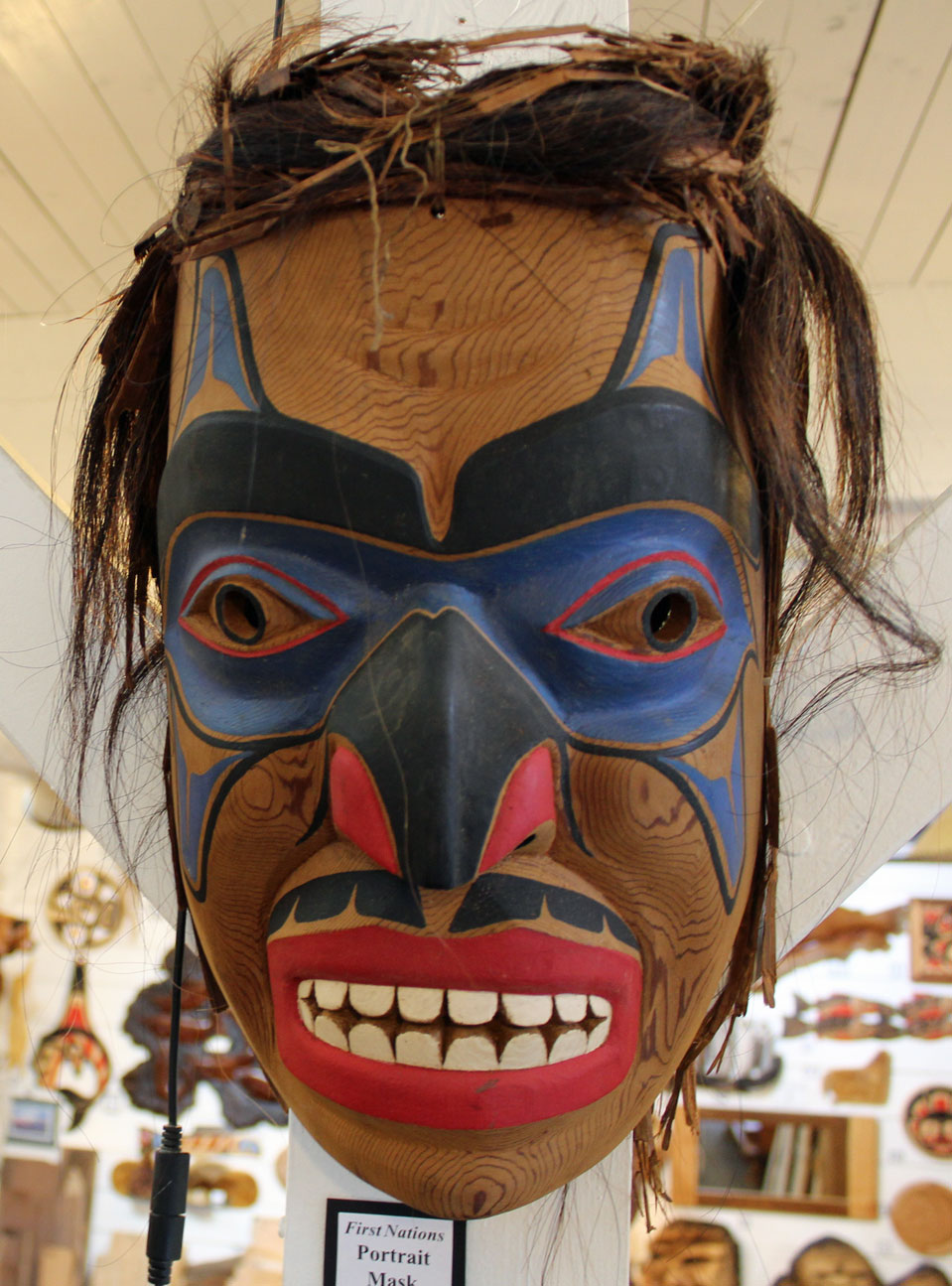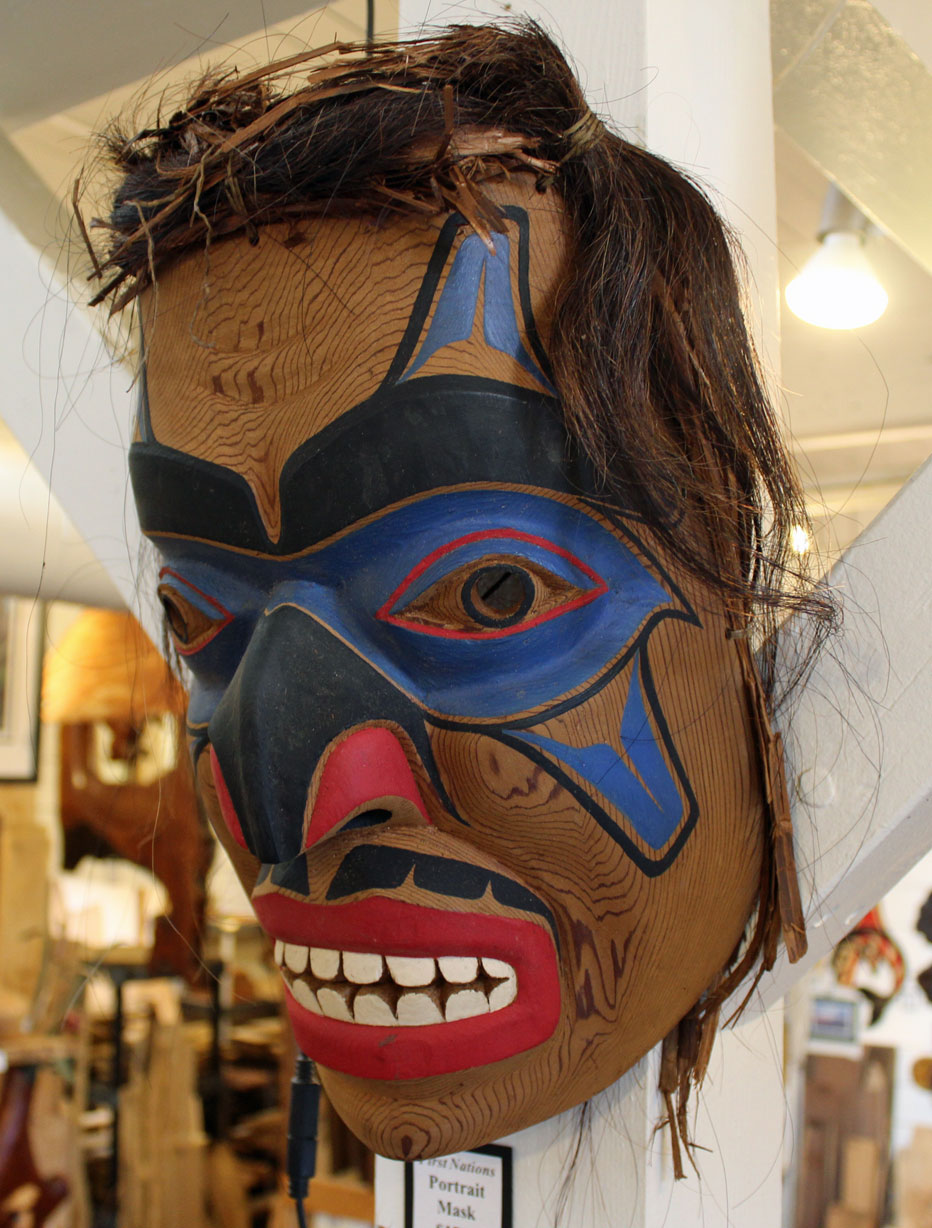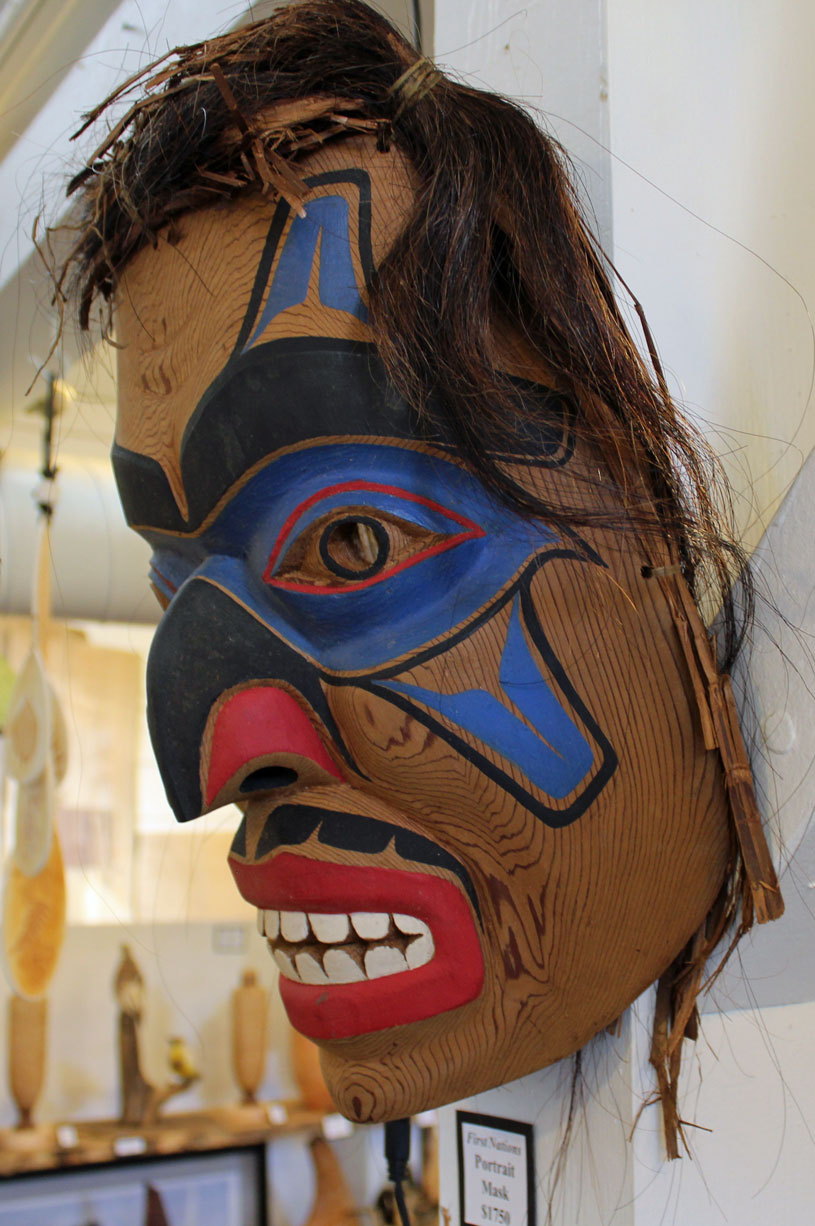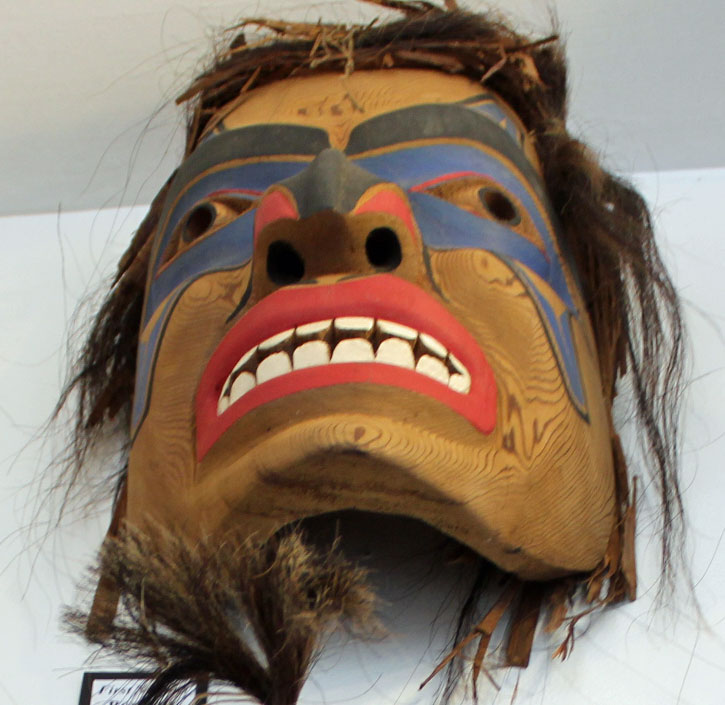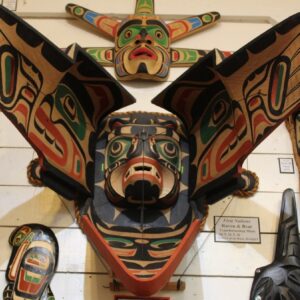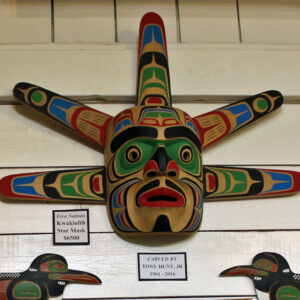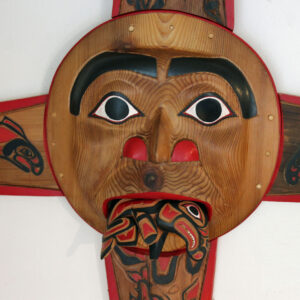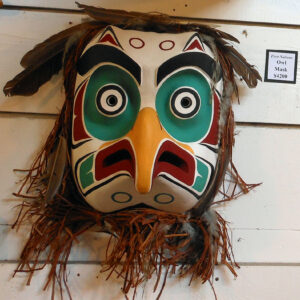First Nations Orca Whale Warrior Portrait Mask
$1,750.00
Dramatic signed Gitxsan First Nation Orca Whale Warrior mask was carved of red cedar as portraiture. The face, with fierce bared teeth, is decorated with an Orca Whale motif in indigo blue, red, and black. Horsehair and raffia at the top.
Measures about 14 inches high, ten inches wide, eight inches deep. Priced at $1750.
The artist is a member of the Gitksan (or Gitxsan) First Nation. Gitksan is the indigenous language of the native people situated in or near the valley of the Skeena River in western British Columbia.
THE LEGEND OF CHIEF WAUT-SALK AND THE KILLER WHALES
This legend takes place on Boulder Island (Indian Arm). The island was at one time a burial place for the Tsleil-Waututh (“the people of the inlet”) First Nations people who still live along the waters of Indian Arm.To appreciate the significance of the killer whales, it is best we begin with the legend of Chief Waut-Salk (~ 1770-1840). He is described as a man who revered all the elements of Mother Nature. He would speak with her, and she would respond in some way. One day he witnessed some boys casting rocks at the spawning salmon in the Indian River. He asked them to stop.
“When you hurt the salmon, you also hurt me,” he said.
But the boys only laughed and continued their cruel play.
“Okay,” he warned. “Tomorrow, there will be no salmon.”
The next day, even though the river should have been thick with spawning salmon, not a fish was seen! His people, alarmed and concerned, asked Waut-Sauk to see about their return. Chief Waut-Sauk was said to have a close relationship with all marine life. He could make them come and go at will. Hence, not long after their request, the salmon were back.
Many years later, the legend of the killer whales took shape with the passing of Chief Waut-Sauk. As was the tradition, the Chief was wrapped in cedar bark and placed in the branches of trees on the island. But this was not to be his final resting place. Christian missionaries later denounced this practice and demanded the bodies be moved. Thus Chief Waut-Sauk and his ancestors now rest in the cemetery found by the Dollarton Highway past Cates Park (North Vancouver).
But wait! Where do the killer whales come in, you ask? Chief Waut-Salk’s son placed his father’s body in a canoe to move him across the water to the new cemetery. Legend says, two Orca whales and scores of smaller fish were seen escorting the canoe to the shore and did not leave until Waut Salk’s remains were properly buried in the ground. The Orcas then disappeared from the Arm entirely and have never been seen since. To this day, when the odd Blackfish are seen in the Inlet, the Chief’s descendants must wonder who these silent guards have come to escort into the land of “Forever”. Boulder island is now privately owned. It is recommended that to observe the spirits wandering through the trees, one should watch from the water on a kayak or boat.
Thank you to www.victoriawhalewatching.com

